The Mursis, women plateau
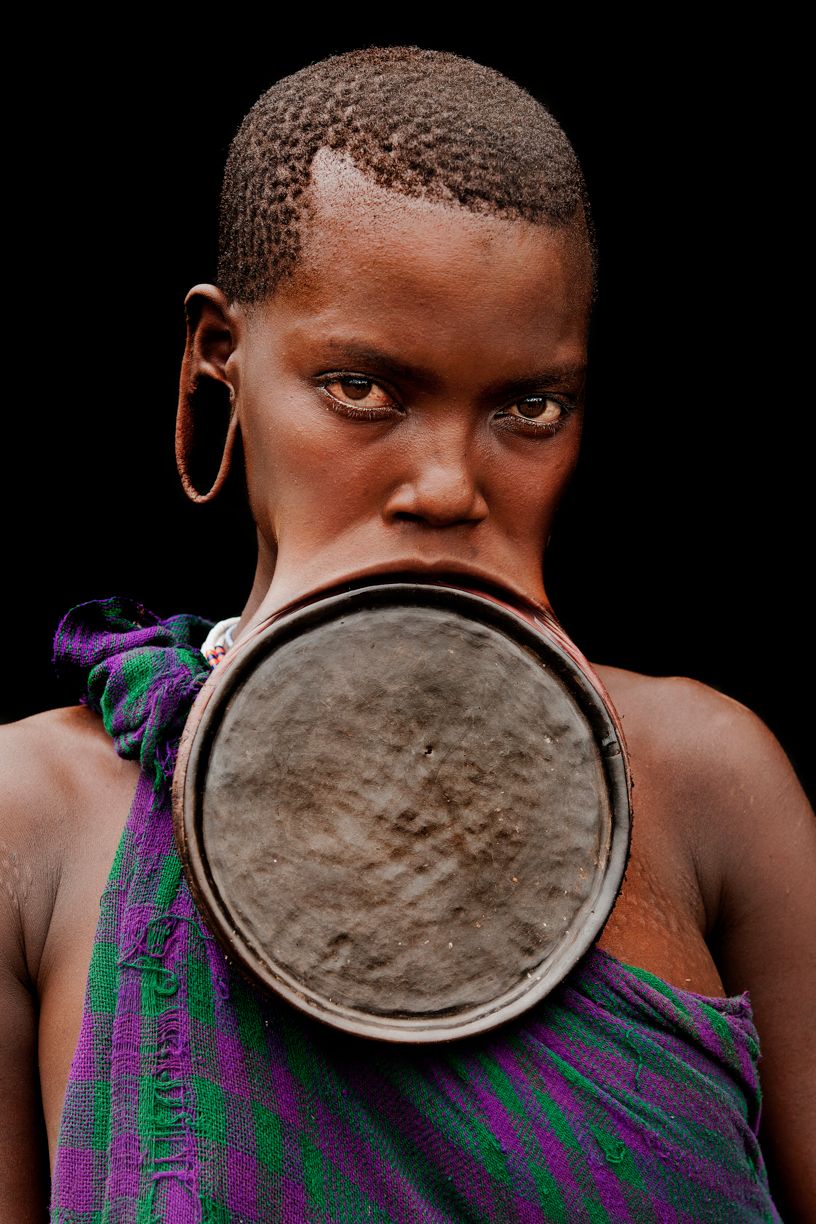
The Mursis are semi-nomadic inhabitants of southern Ethiopia, living on the western outskirts of Mago National Park, on the banks of the Omo River. They form one of the last peoples of Africa whose women wear labret (the plateau form is also called labial plate or labial disc.The labial plate can measure up to 25 centimeters in diameter.
An insert of the same type can adorn the lobe The wearers of this finery are called "trailing men" or "women trays." This ornamentation is described as mutilating because it distorts the mouth by accentuating the prognathism (facial configuration according to which one of the two jaws is more salient than the other) and running nets of saliva), hence their name "women plateau".
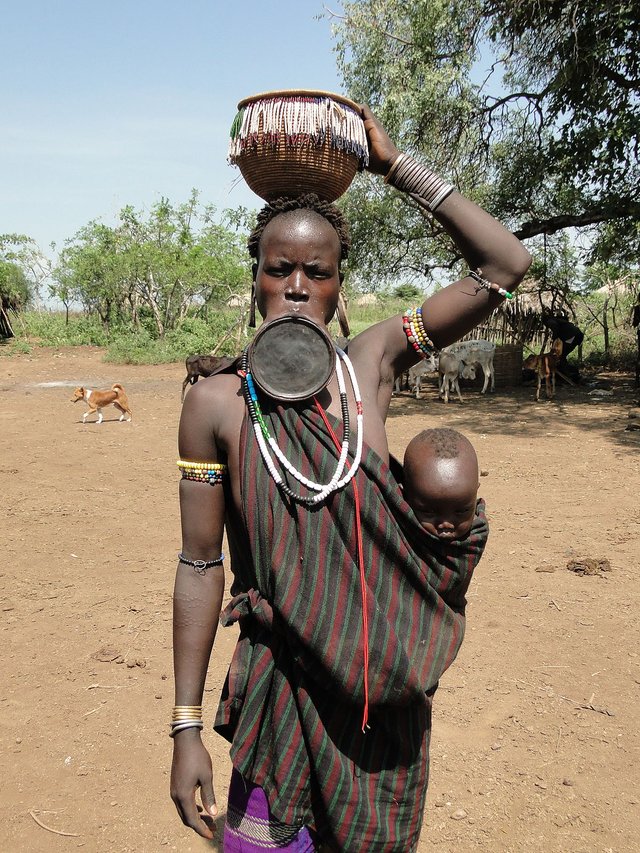
The Mursis live in a remote area of Ethiopia.
They reign as masters and live in perfect symbiosis with the environment. They form a homogeneous group, governed by age-old dogmas and ancestral rituals.
They have little interaction with the other peoples of the region and fiercely fight with lances and Kalashnikovs, the theft of cattle and the raiding of women by other peoples on their territory.
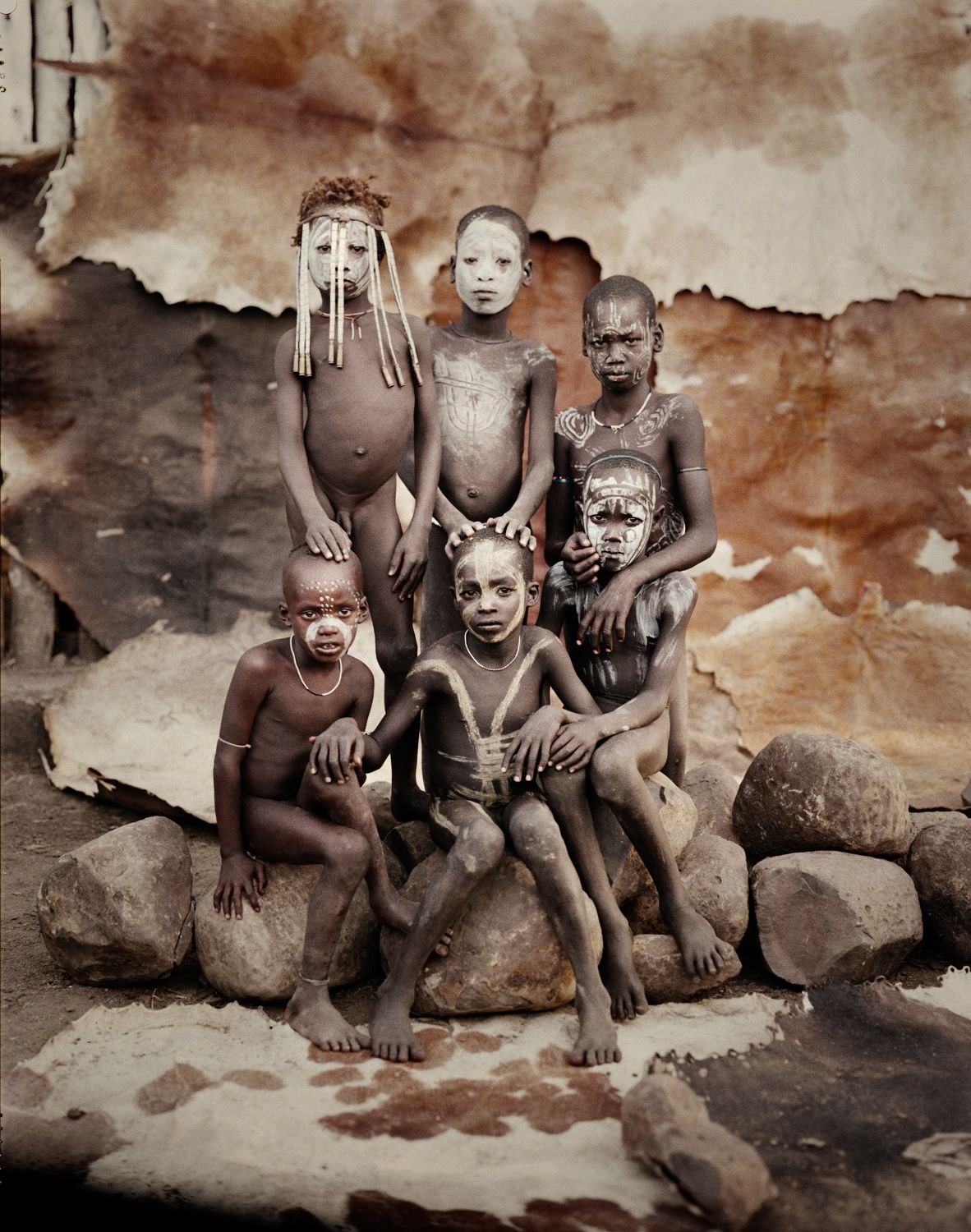
They regularly quarrel with the Hamers (East Africans living in southwestern Ethiopia in the Hamer Bena Woreda, a fertile area of the Omo Valley in the Nations Region. nationalities and peoples of the South), from which they are separated by a large territory of arid scrub and they maintain tense relations with their cousins the Bodi.
In order to develop aggression, shape agility and endurance, and enhance the masculinity of future warriors, the Mursis stage battles, the dongas.
The participants draw on the body, with white paint, symbolic motifs that provide them with the protection of supernatural forces.
Mursis attaches great importance to intra-tribal harmony. They cluster in villages far from the swampy shores of the Omo River, where the tsetse fly is less prevalent. They only bring their cattle to drink in the river when absolutely necessary, to limit the ravages caused by the development of sleeping sickness. Their huts are thatched and small.
The Mursis, like the majority of local people, fear the waters of the Omo, because, in addition to the strong current and whirlpools that discourage the best swimmers, the thick brownish silt of the river camouflages hippopotamuses, crocodiles fond of flesh human and evil spirits. Only the Batchas, a people living in the northernmost region of the Omo Valley, are able to brave these dangers and take the role of smugglers on small craft dug into tree trunks.
Women's ornaments
The establishment of the lower labial ornament called dhebe in women occurs before the age of 10 years: after extraction of the lower incisors, the lip is perforated and a wooden peg put in place; the orifice is enlarged from year to year by the introduction of larger and larger cylinders, until a large clay disk decorated with engravings is put in place. We do not know precisely the origin and function of this practice but texts say that the piercing of the lip was accompanied by the piercing of the hymen.
Some anthropologists claim that this mutilation was intended to make unsightly women to protect them from slavery raids. Today, the function is only symbolic since only women of high caste are entitled to wear them. The size of the tray is commensurate with the dowry required by the family of young girls to marry, dowry made up of cattle and goats and a firearm.
The port is not permanent, but limited to the moments of presence of the husband and son or important meetings. Apart from these occasions, the set is not used in everyday life.
This custom of the labial disc is found among the Surmas. It should be pointed out that the Dizi, a neighboring Nilotic people, do not marry surma women but agree to give theirs in marriage to the Surmas for a dowry.
It is not the only ornament of women, who also wear necklaces made of shells or pearls and shave their skulls. On the other hand, men and women pierce their ears where similar discs or wooden washers are inserted and carry scars on their arms, stomach or chest.
In men, these scarifications commemorate an act of bravery and inspire respect for the members of the group. Women wear scarification on the shoulder that constitutes their tribal identity card while necklaces, bracelets and breast paints betray a desire to please, especially at the time of the donga, when the fighters have acquired the right to covet a companion.
Male ornaments
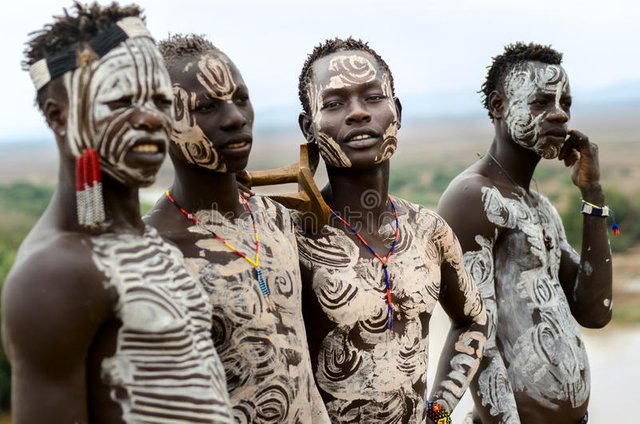
The body paintings that men draw between themselves on the body and face reflect a surprising creative potential. These ephemeral chalk-based works change according to the social events of the tribe; thus, during ritual fights, the makeup of the face is intended to intimidate the opponent.
To shave completely is, in Mursi men, a sign of elegance. The most coquettish ones epilate even the eyelashes.
The donga
Donga is the name of a pretty cruel tournament that takes place at the end of the rainy season, the most anticipated moment by young singles. It is an opportunity for men who want to marry to prove their courage in front of the whole tribe.
The rules of these duels where the fighters face each other armed with poles remain extremely simple: it is necessary to give a severe correction to his rival by avoiding to kill him, blunder which is punished.
The winner who has eliminated all his opponents is carried in triumph to an audience of young girls. One of them will choose the hero for a husband.
As time goes on into the future the cultures that are in remote locations will get smaller because of the new tech. Coming online every day
Downvoting a post can decrease pending rewards and make it less visible. Common reasons:
Submit
Hi @lndesta120282
This is not the most pleasant sight. I have seen such phenomena many times. In some tribes, the ears are stretched, and in some, they extend the neck. I, as a simple person, never understood the reason for this to disfigure my body. Although maybe this is their culture and customs, but it looks very unusual and abnormal.
This is definitely a harsh tribe with harsh customs. Especially Dong. The only plus is that they really fight for a woman. And in a civilized society, many women have become loose and easily accessible. But not all, thank God.
Thank you, it was interesting :)
Downvoting a post can decrease pending rewards and make it less visible. Common reasons:
Submit
good article @lndesta120282
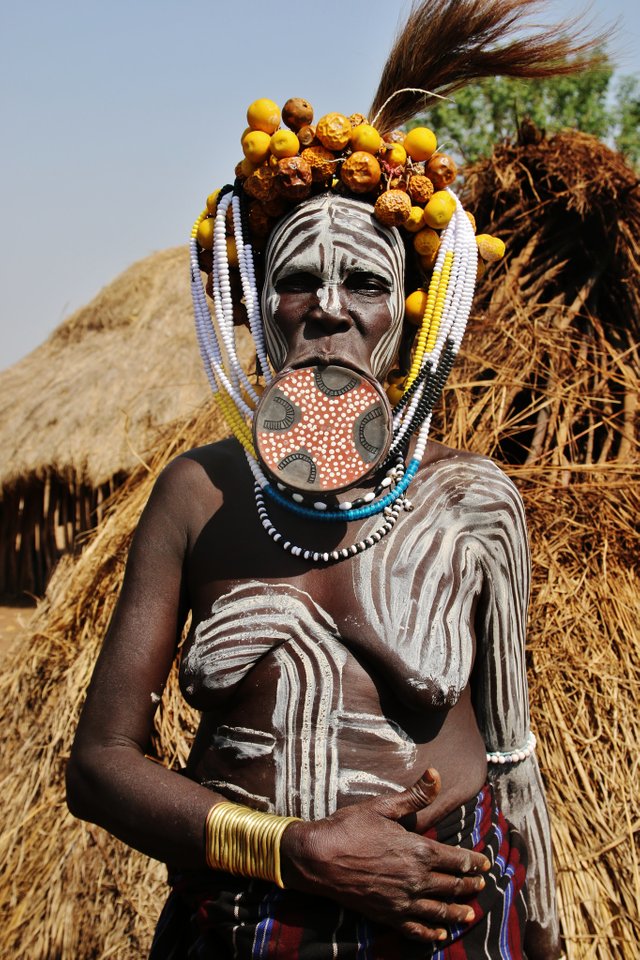
this the culture in africa
The Mursi (or Mun as they refer to themselves) are a Nilotic pastoralist ethnic group in Ethiopia. They principally reside in the Debub Omo Zone of the Southern Nations, Nationalities, and People's Region, close to the border with South Sudan. According to the 2007 national census, there are 7,500 Mursi, 448 of whom live in urban areas; of the total number, 92.25% live in the Southern Nations, Nationalities, and People's Region (SNNPR
thank you for sharing
Downvoting a post can decrease pending rewards and make it less visible. Common reasons:
Submit
this is great article@lndesta120282
thank you for youre efforts
resteem
Downvoting a post can decrease pending rewards and make it less visible. Common reasons:
Submit
I love this post@lndesta120282
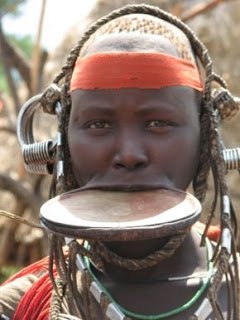
I love exploring the Conflicts. I thank you for your efforts that have helped us
Downvoting a post can decrease pending rewards and make it less visible. Common reasons:
Submit
Sorry for saying that but i have to say it ..Stupid culture !
Downvoting a post can decrease pending rewards and make it less visible. Common reasons:
Submit
Yes, It is depends on the viewers mind only.
Downvoting a post can decrease pending rewards and make it less visible. Common reasons:
Submit
Great job sir.
Downvoting a post can decrease pending rewards and make it less visible. Common reasons:
Submit
very nice article
this the crazy of africa
Downvoting a post can decrease pending rewards and make it less visible. Common reasons:
Submit
That's a great learning post.I had no idea about this tribe.I am amazed by knowing this still this kind of tribe exist in the world,while we all are talking about high speed internet,high tech gadget,reaching to mars but here is the reality.We should help them to get a better life.Thank's for the unique post.Usually people doesn't post this kind of things.@upvoted and resteemed
Downvoting a post can decrease pending rewards and make it less visible. Common reasons:
Submit
Can't imagine some people still lives like this in the 21st century. But I think the most important thing is that they are happy and they live peacefully. It's a weird wild world
Downvoting a post can decrease pending rewards and make it less visible. Common reasons:
Submit
Congratulations @lndesta120282, this post is the third most rewarded post (based on pending payouts) in the last 12 hours written by a Superuser account holder (accounts that hold between 1 and 10 Mega Vests). The total number of posts by Superuser account holders during this period was 1629 and the total pending payments to posts in this category was $13828.63. To see the full list of highest paid posts across all accounts categories, click here.
If you do not wish to receive these messages in future, please reply stop to this comment.
Downvoting a post can decrease pending rewards and make it less visible. Common reasons:
Submit
A very unique culture. Success is always a friend
Downvoting a post can decrease pending rewards and make it less visible. Common reasons:
Submit
wendfull article
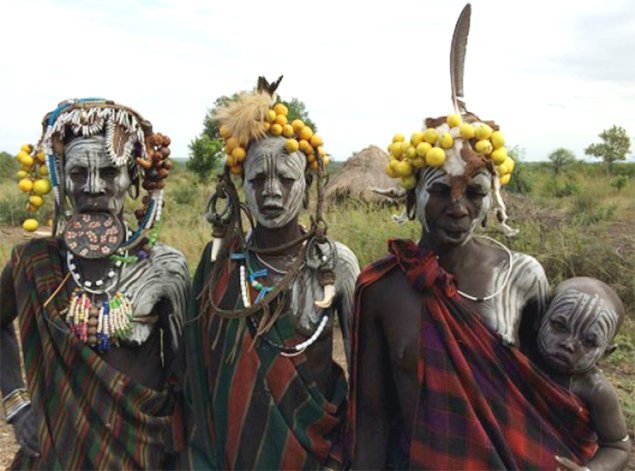
thank you for this informations
Downvoting a post can decrease pending rewards and make it less visible. Common reasons:
Submit
OMG!
This looks completely horrible
Downvoting a post can decrease pending rewards and make it less visible. Common reasons:
Submit
Great art...
Downvoting a post can decrease pending rewards and make it less visible. Common reasons:
Submit
Did you know you can win SBD by participating in "FIVE WORD STORIES" challenge?!
You can read about the challenge HERE and participate by submitting your story in the comments section of the challenge entries which you can find HERE. You will have the chance to win SBD in this challenge.
I'd be happy to see you around my friend!
NOTE: Your participation is through commenting on the challenge photos I post, not posting photos
Happy Steeming!

Downvoting a post can decrease pending rewards and make it less visible. Common reasons:
Submit
Don't you think that "The donga" thing is funny?
I mean I can't believe that these kind of tribes are still exist in the world.
BTW, Thanks for sharing @lndesta120282
Downvoting a post can decrease pending rewards and make it less visible. Common reasons:
Submit
It's an other world we have very different lifestyle !
Downvoting a post can decrease pending rewards and make it less visible. Common reasons:
Submit
Really nice post...
Downvoting a post can decrease pending rewards and make it less visible. Common reasons:
Submit
hehe

Downvoting a post can decrease pending rewards and make it less visible. Common reasons:
Submit
hahahahaha
Downvoting a post can decrease pending rewards and make it less visible. Common reasons:
Submit
What is it?
Downvoting a post can decrease pending rewards and make it less visible. Common reasons:
Submit
Heard about the Donga from a friend.
Its actually pretty cruel to whip each other with those long sticks.
Thank the lord that i am not one of those Ethopian Tribal Men
Downvoting a post can decrease pending rewards and make it less visible. Common reasons:
Submit
and my sister got scolded at home for a piercing in her navel ... :)
Downvoting a post can decrease pending rewards and make it less visible. Common reasons:
Submit
This is pretty weird shit! Believe it or not!
Downvoting a post can decrease pending rewards and make it less visible. Common reasons:
Submit
Awww...
Different people with different culture, Nice article.
Resteem already!
Downvoting a post can decrease pending rewards and make it less visible. Common reasons:
Submit
very interesting the culture of these people, but there is something that we ignore and that is that in the world we have people who without putting the objects that they use have their mouths as big as them to speak without measuring the bad actions forgetting what is really important for humanity, build and cooperate ..
muy interesante la cultura de esta gente, pero hay algo que ignoramos y es que en el mundo habemos personas que sin colocarnos los objetos que ellos usan tenemos la boca tan grandes como ellos para hablar sin medir las malas acciones olvidando lo que verdaderamente es importante para la humanidad, construir y cooperar..
Downvoting a post can decrease pending rewards and make it less visible. Common reasons:
Submit
drôle de culture
Downvoting a post can decrease pending rewards and make it less visible. Common reasons:
Submit
oh my god unbelievable
Downvoting a post can decrease pending rewards and make it less visible. Common reasons:
Submit
fascinating how they keep up these old traditions. also totally unrelatable to modern life.
Downvoting a post can decrease pending rewards and make it less visible. Common reasons:
Submit
I got really surprised to what they do the their lips/mouth. I had no idea that was even possible to be done.
This tribes have some weird (not judging) habits, and from a lot of them this one specific makes me confused...
Downvoting a post can decrease pending rewards and make it less visible. Common reasons:
Submit
also unbelievable
Downvoting a post can decrease pending rewards and make it less visible. Common reasons:
Submit
Buen post! Muy interesante la informacion y excelentes fotos.
Downvoting a post can decrease pending rewards and make it less visible. Common reasons:
Submit
Any picture with a bitcoin in their mouth? That would be better!
Downvoting a post can decrease pending rewards and make it less visible. Common reasons:
Submit